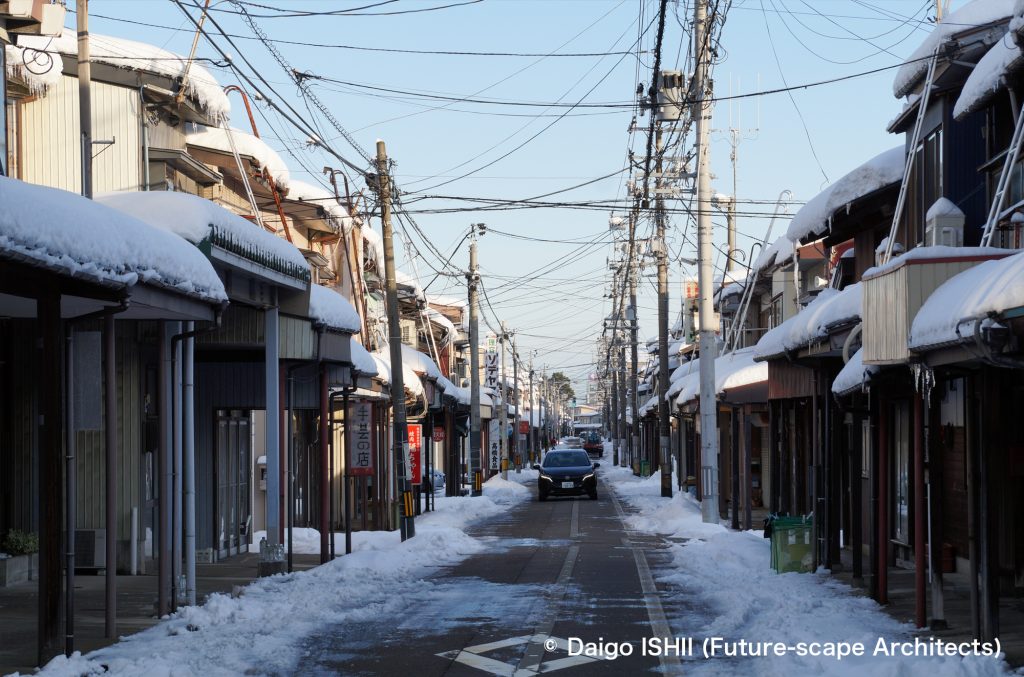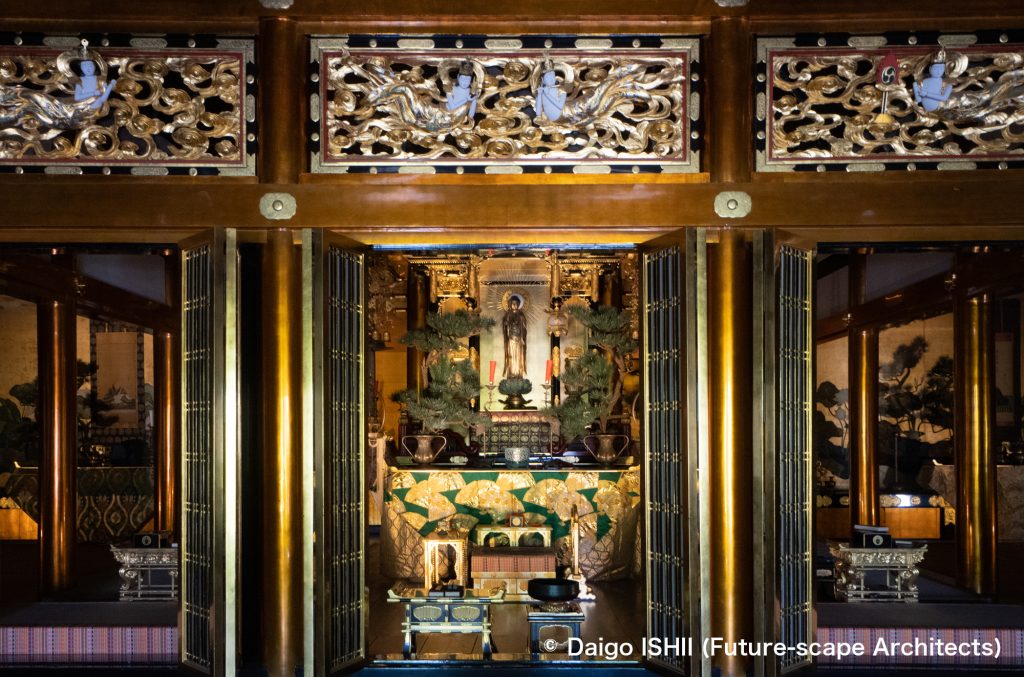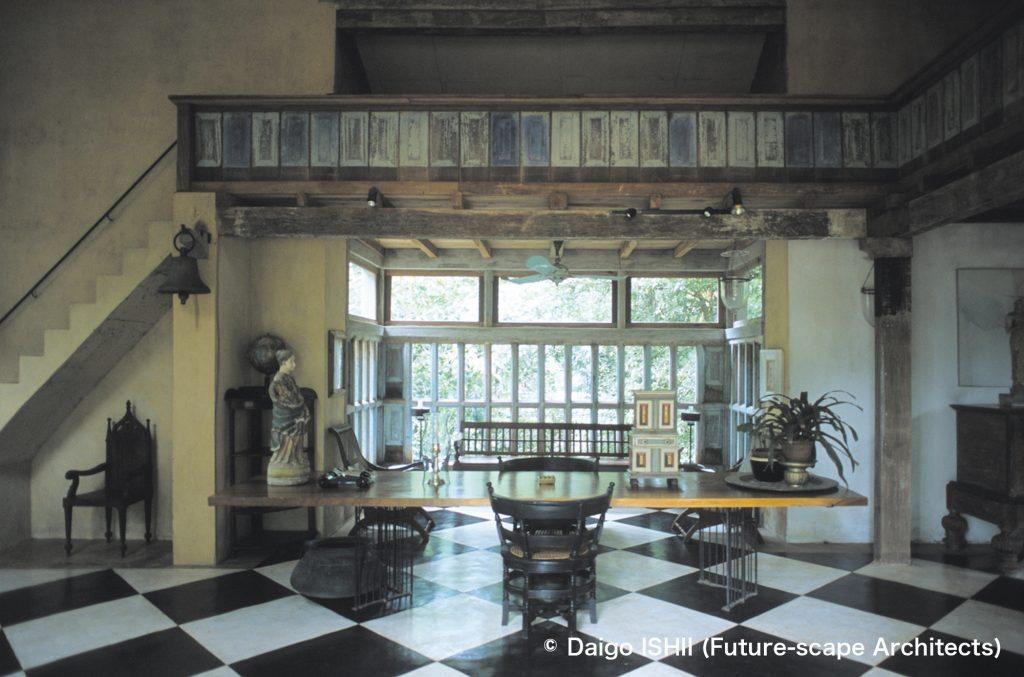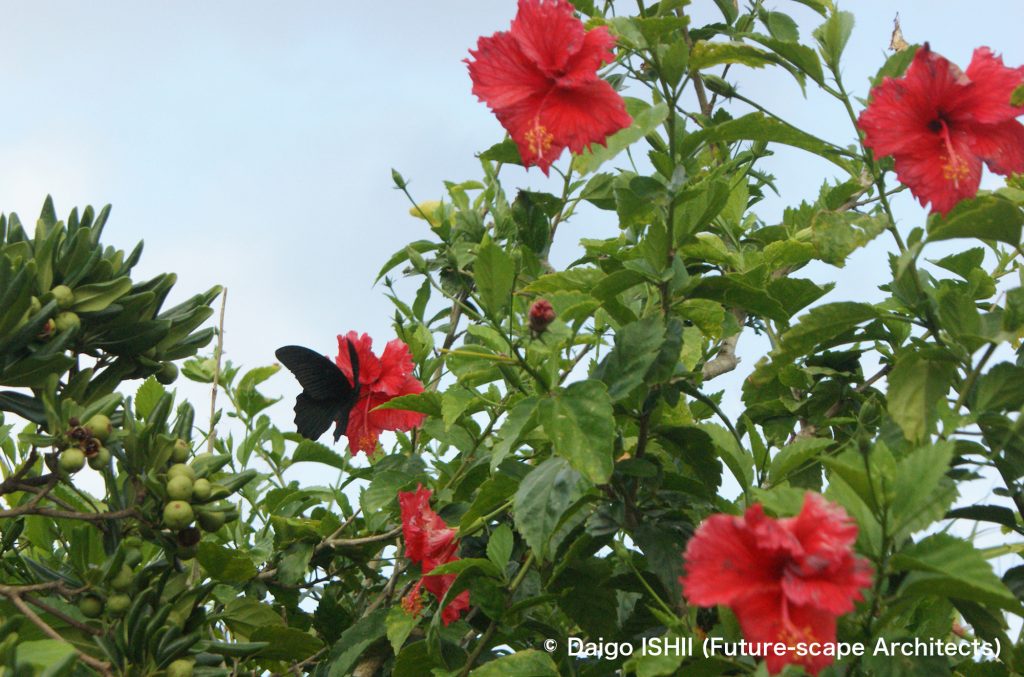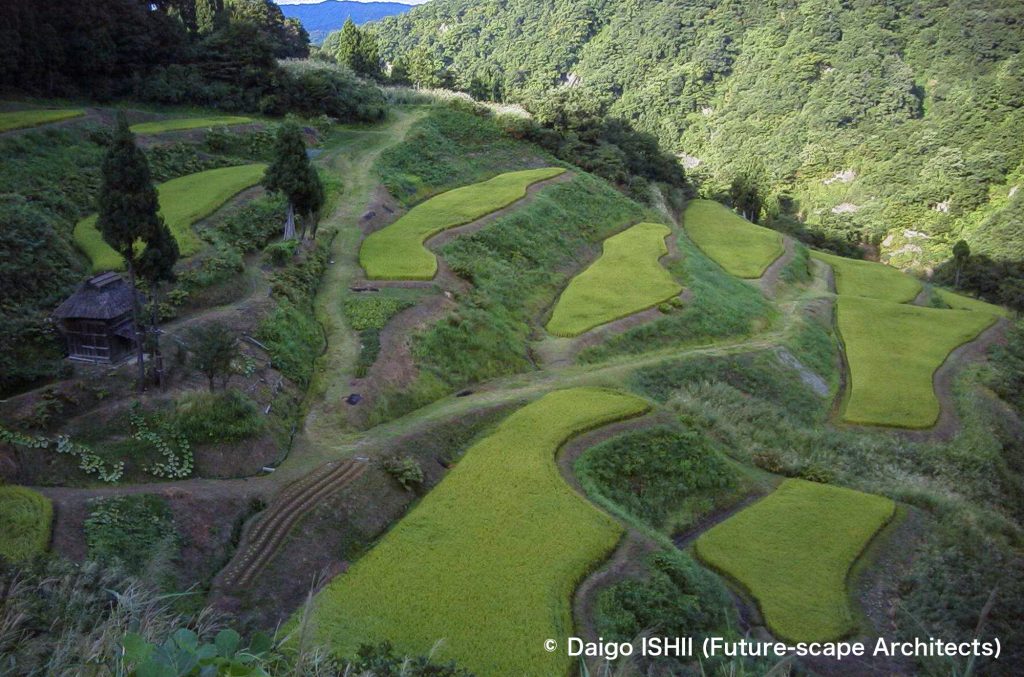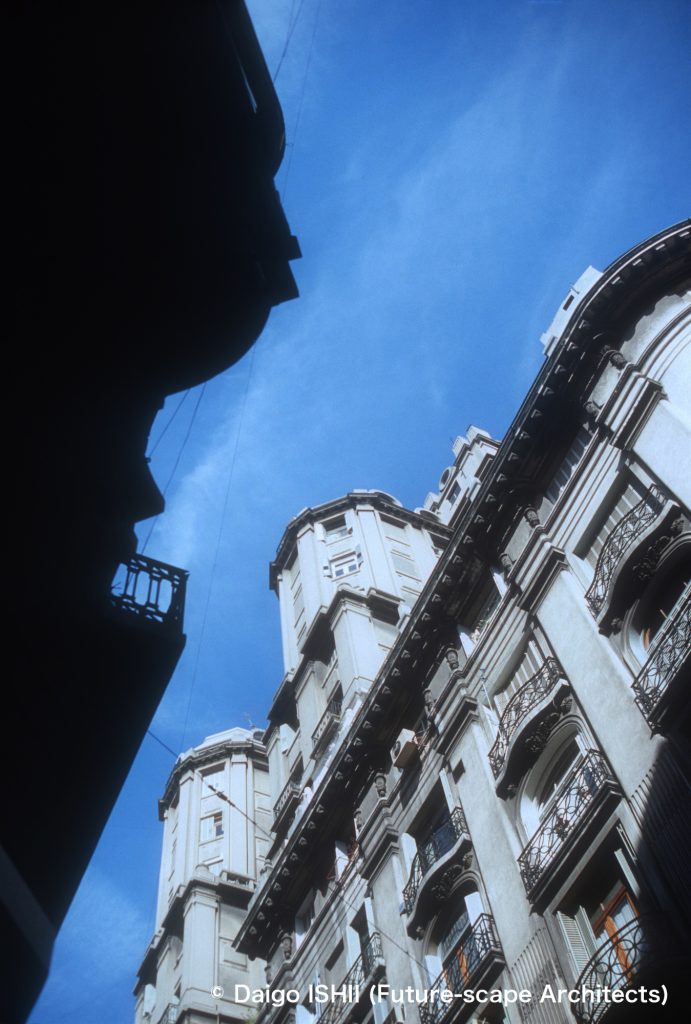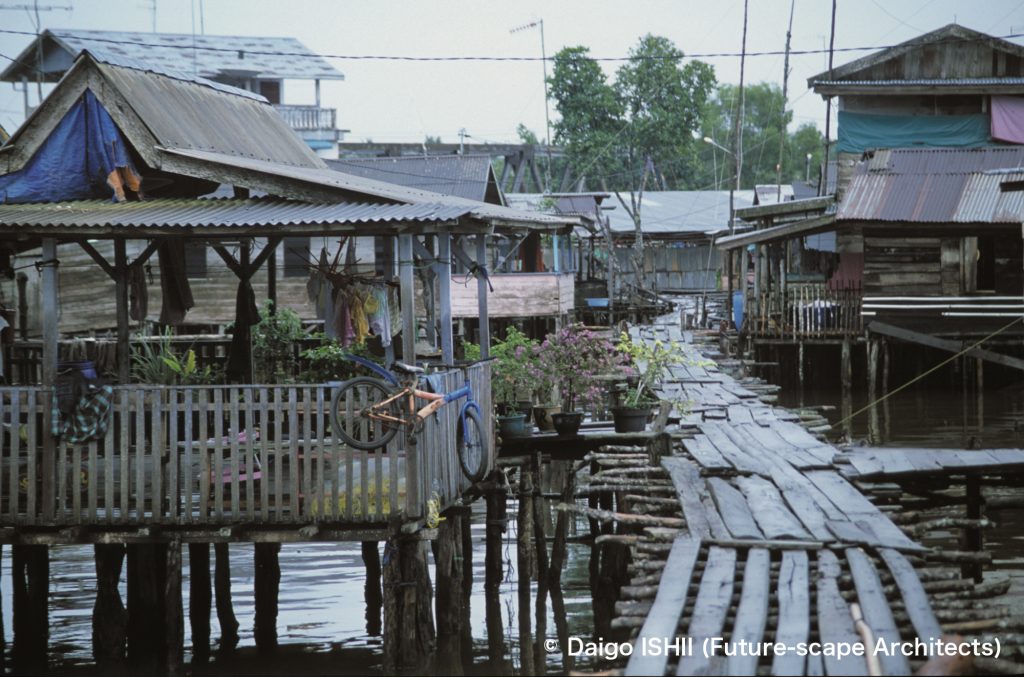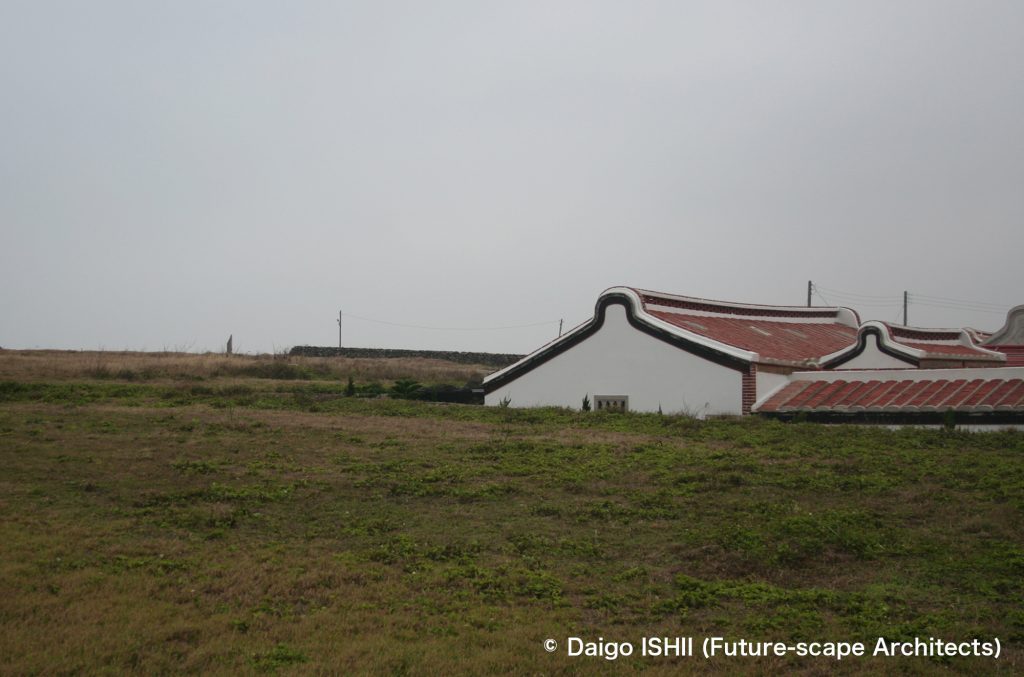On Omachi Dori Street that represents Gangi Streets in Takada, Nishiti-no-ichi Market (Two and Seven Market) and Shiku-no-ichi Market (Four and Nine Market) are opened.
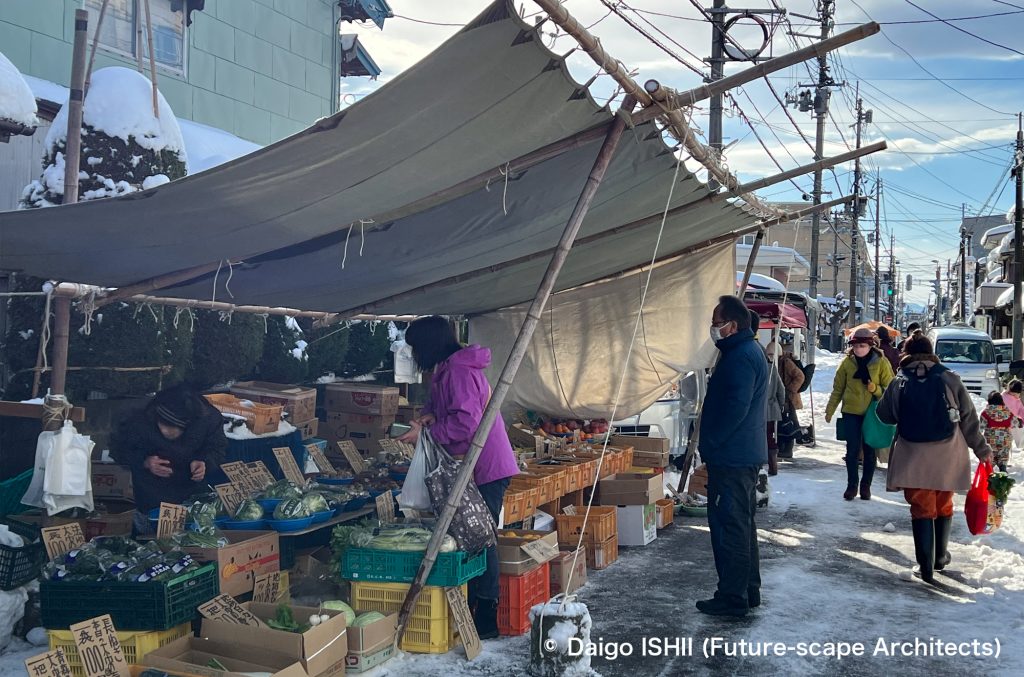
In the southern and central part of the street, the market is held on 16 days a month, that is, on days with the final number of 2, 4, 7, and 9. Compared to the time when I first saw it more than 30 years ago, the number of stands and crowds have decreased due to the aging of the population and the decline of the downtown. Still, it is wonderful that the open-air market is open all year round, even in the middle of winter with heavy snowfall. Gangi that blocks the snow is a mechanism to support the market.
It's a local business for the locals. Most stands didn't sell more than their self made production, such as home-harvested bamboo shoots or wild vegetables. I bought strawberries that didn't look good. According to the stand owner, she grew them outdoors in the garden. Strawberries, which were rare to get in the golden age of greenhouses, had a good balance of sourness and sweetness, and were quite exquisite. If near my house was a sustainable market where I could get seasonally grown products at reasonable prices, I would become a regular customer. It was a pity that no many Takada citizens came by.
The highlight of the market is ecological shades that combines bamboo and sheets. Even 30 years ago, it had been rare to see those in other places, but they still remained them here, even though their numbers decreased. I asked about bamboo stands at a Japanese sweet stand, where I bought sweets with an unbelievable price of 40 Japanese Yen. The owner explained me that it must have Madake Bamboo since Mosodake Bamboo easy to buy was too flexible, but now it was difficult to obtain Madake Bamboo since a ferry connecting Sado, a production area of Madake Bamboo, and Naoetsu in the suburbs of Takada has become irregular. Then, according to the chandler from whom I bought two garden brooms for the surprising price of 350 Japanese yen, salesmen stopped visiting Takada due to disruption of the direct limited express trains from Osaka, 500 km from Takada, due to the inauguration of the high speed train connecting with Tokyo.
The reorganization of transportation nationwide and the local open-air market, which are on different scales, were closely connected.
Recent Market
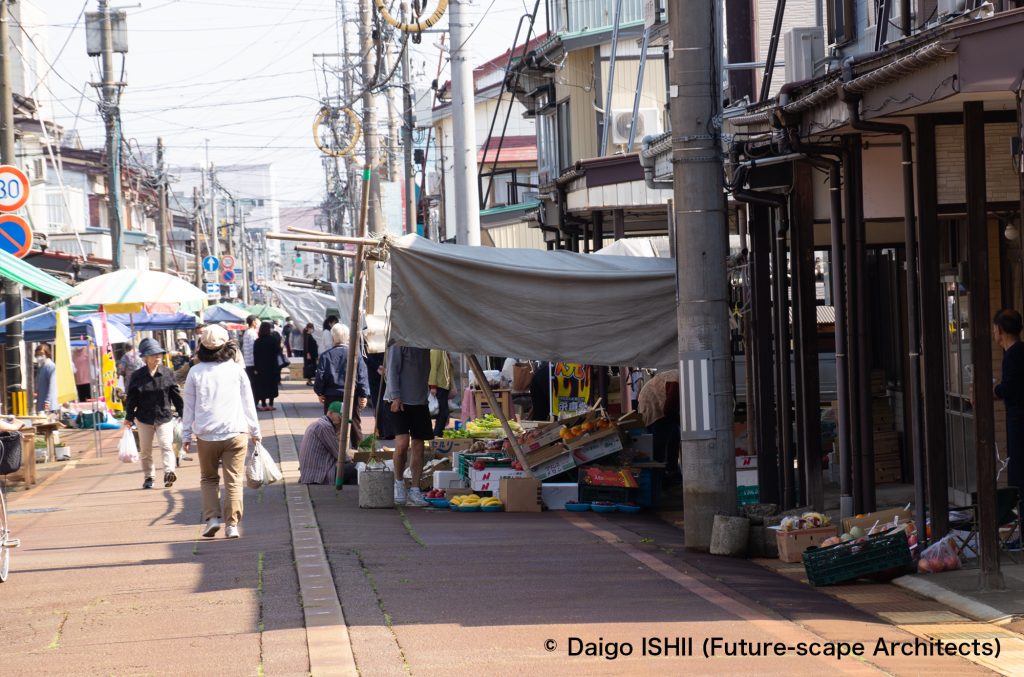
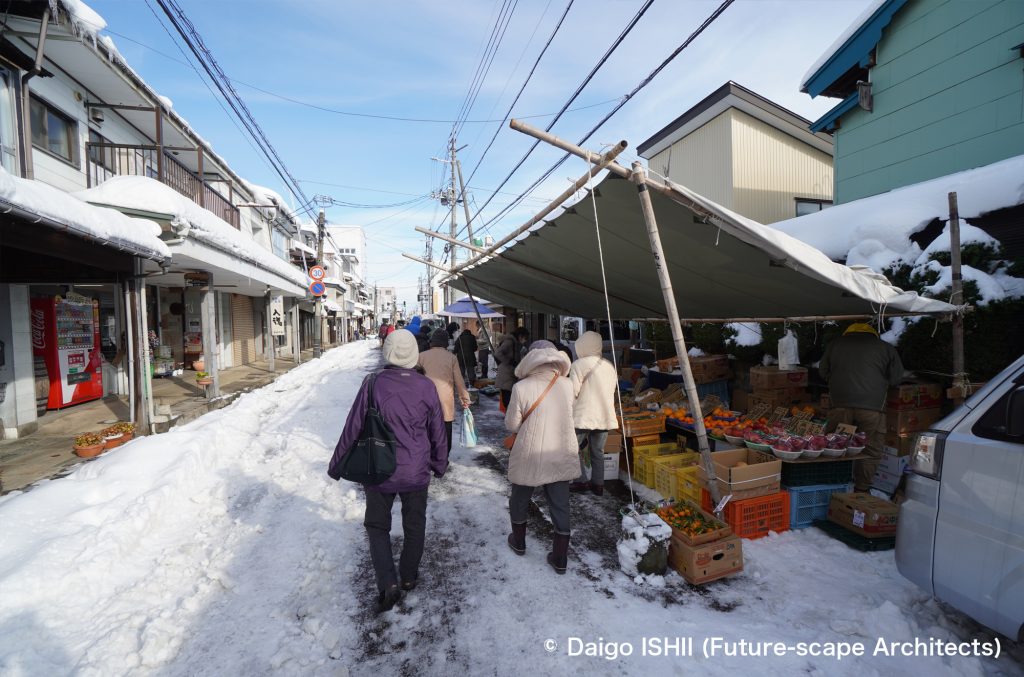
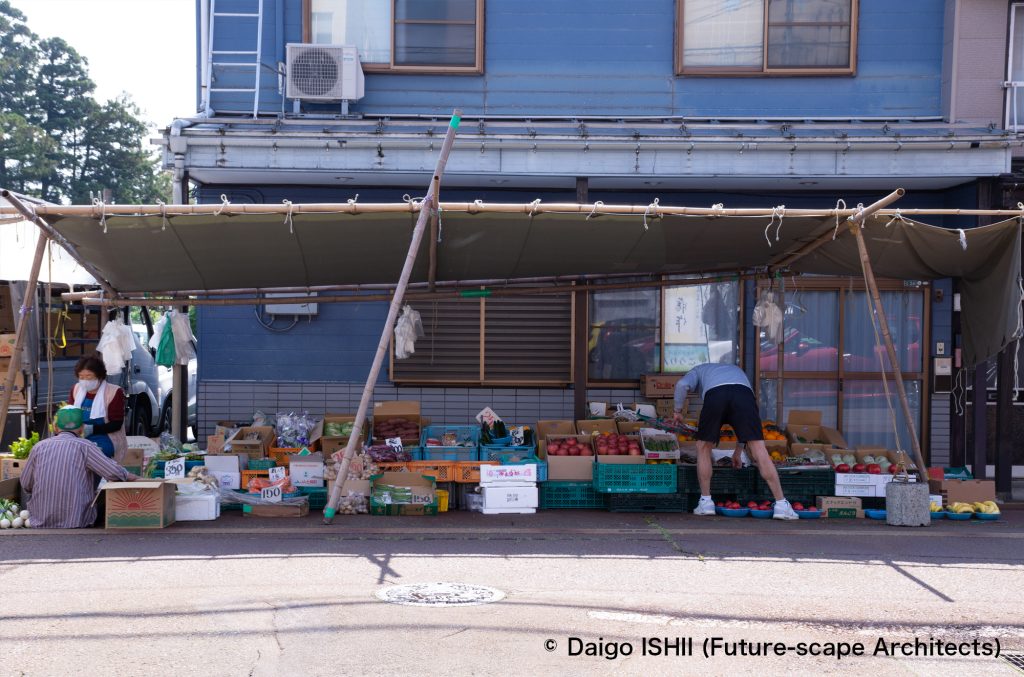
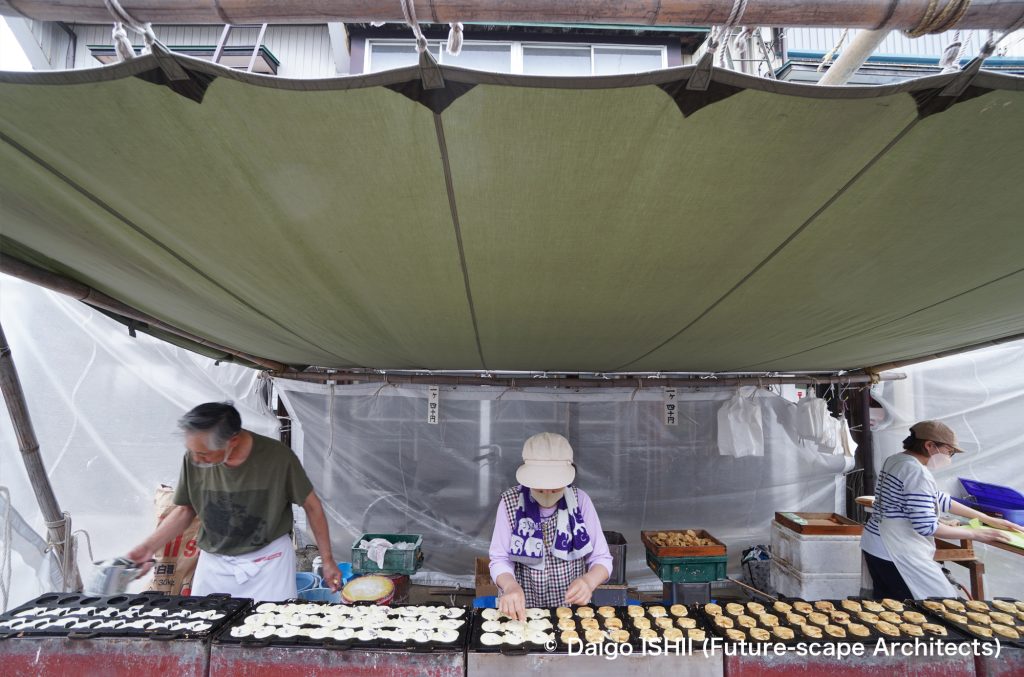
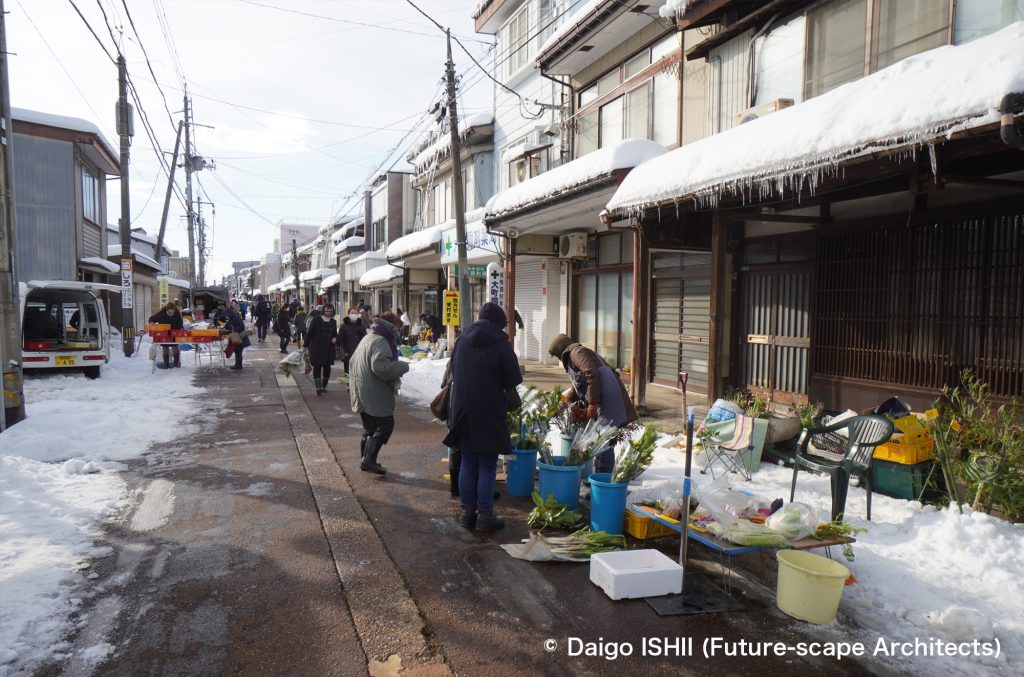
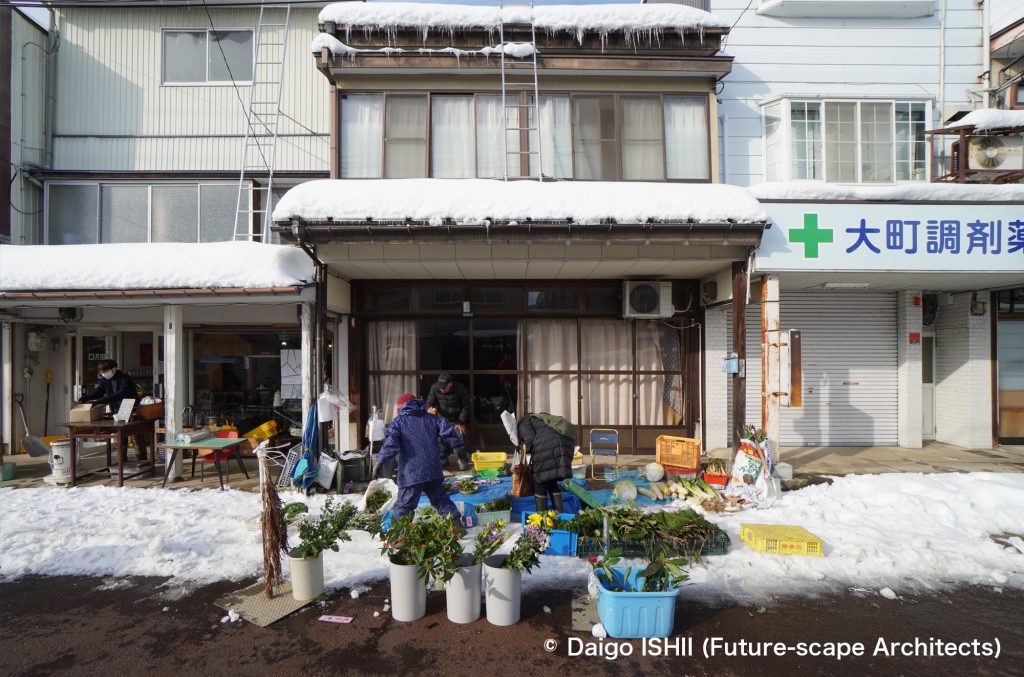
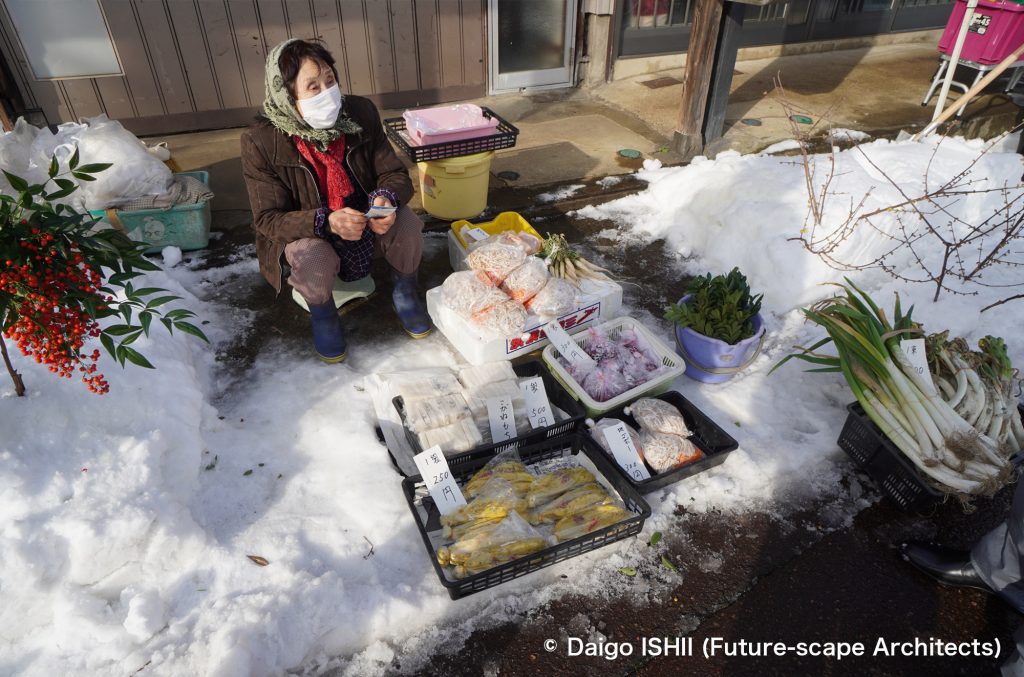
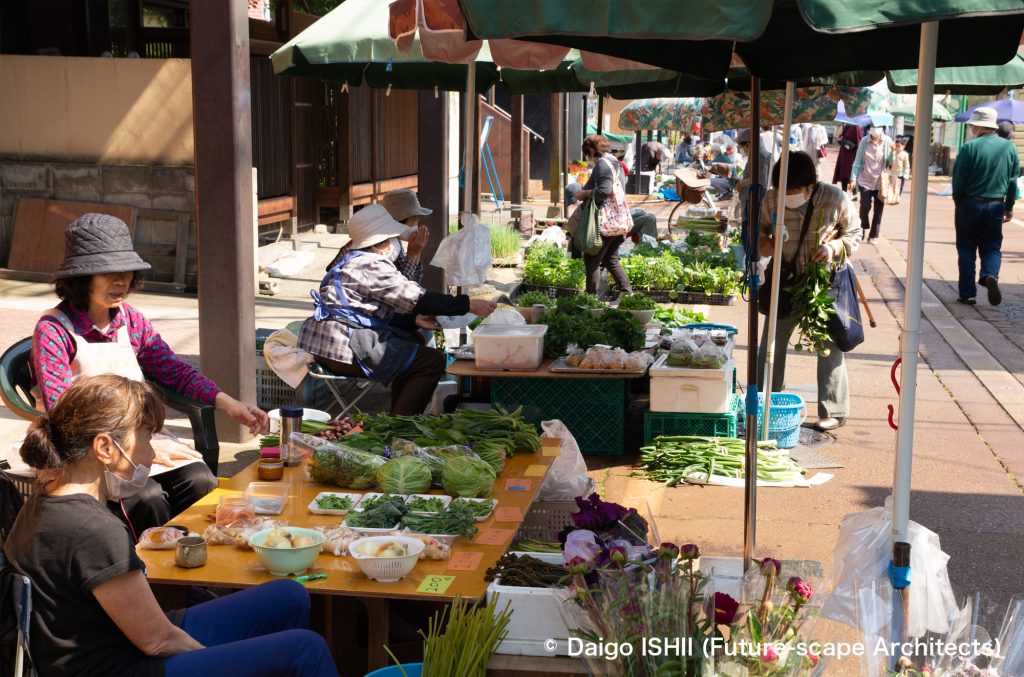
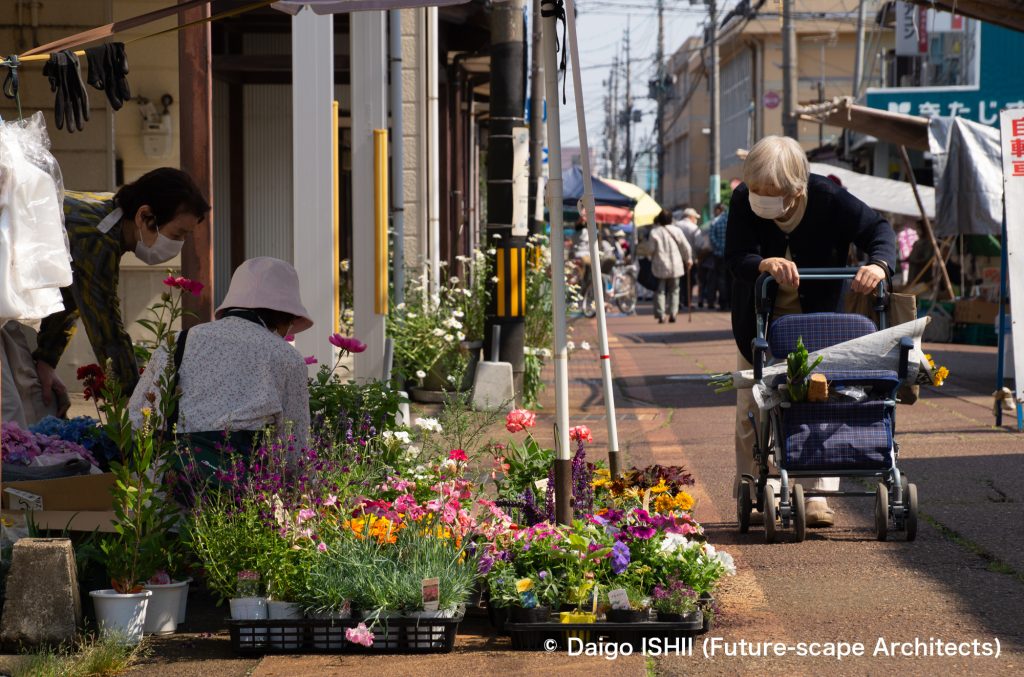
Market in 1985
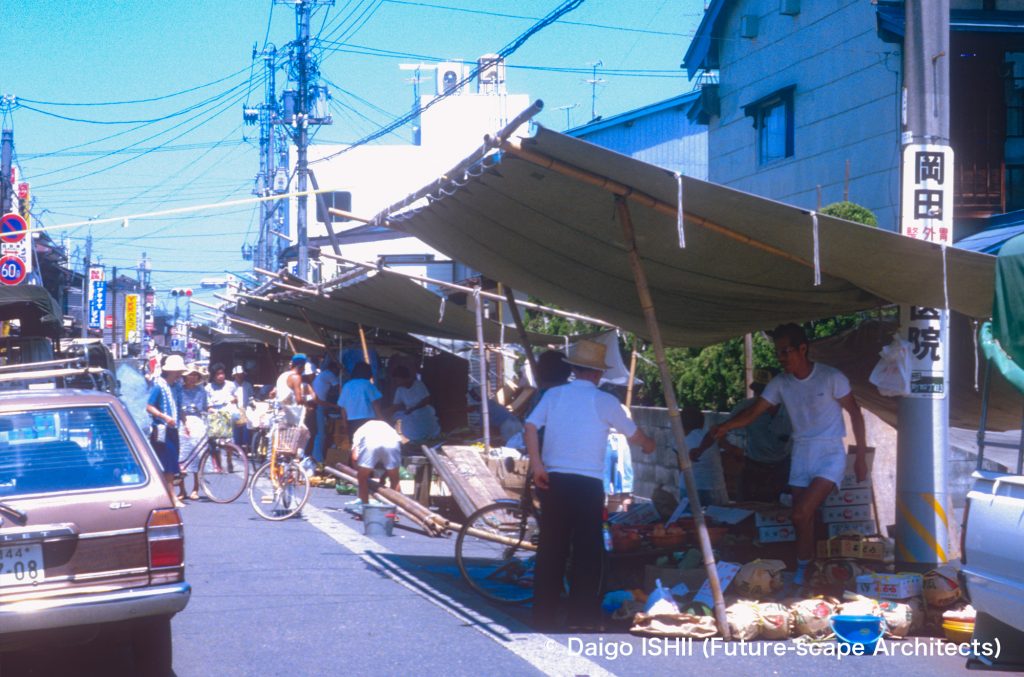
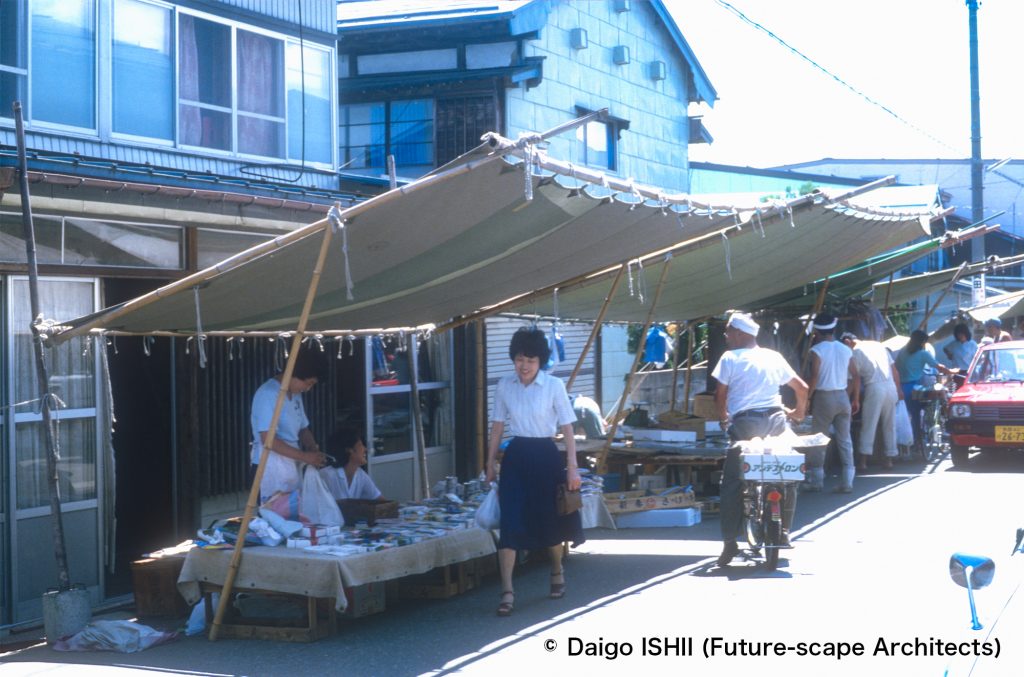
Click here for your impressions
reference
上越観光Navi
Please do not use or upload our photos without permission.




